Audiovox Danelectro-Style Bass




This one is a body-twin to the 12-string, but with a 30" bass neck. Everything about it is Danelectro - lipstick pickups wired in series, stacked controls, masonite pickguard, Danelectro bridge. The body is masonite over chambered plywood, oil-based poly over pearl paint.
This is the last of the "main production run" that I started several years ago. This bass was intended to have a twin guitar, but that plan changed and the twin is not going to happen. This is pure Danelectro - pickups, controls, bridge, body. It plays surprisingly nicely, considering I just strung it up for the first time. After a few weeks, I will do a proper setup.
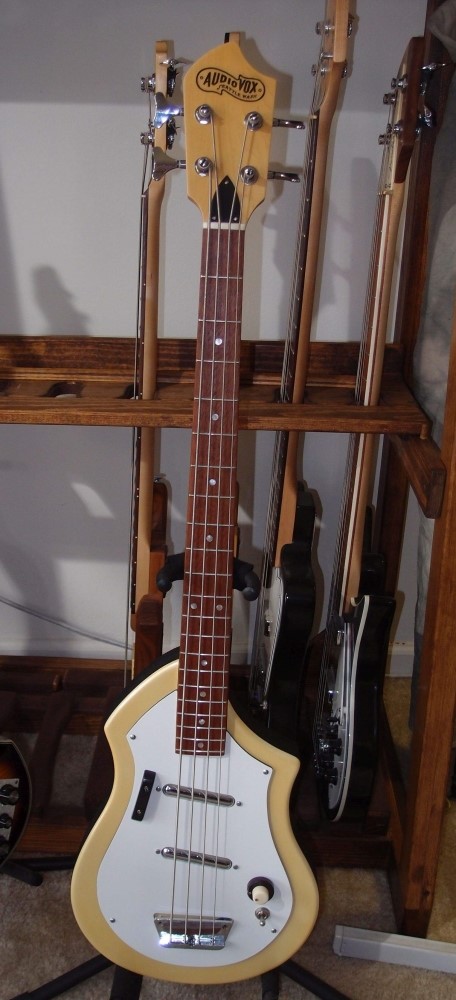
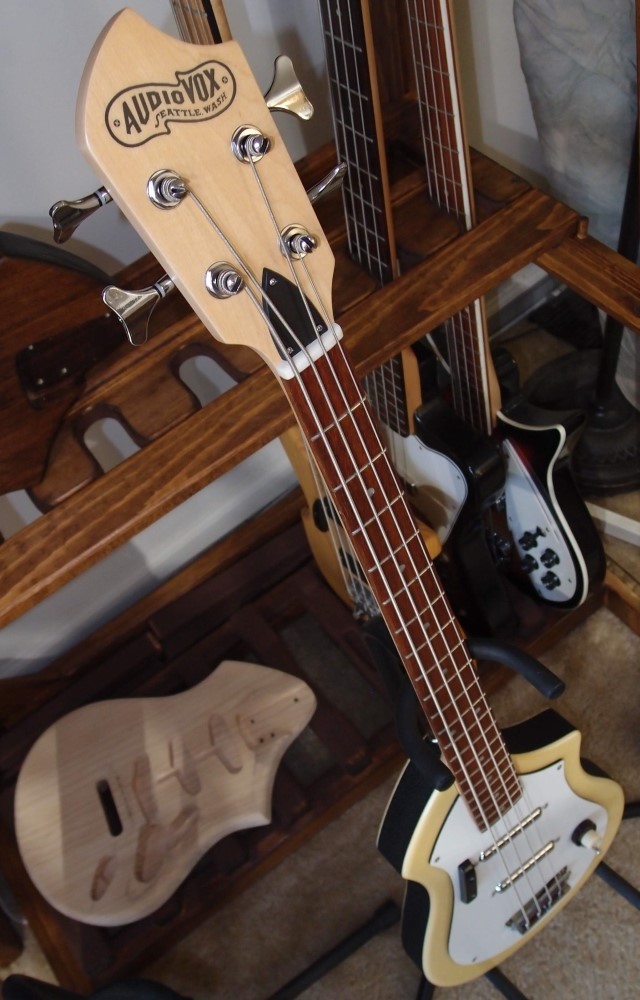
The fretboard is Brazilian Cherry, or Jatoba. Now that rosewood is all but illegal, this wood is going to become a major player. I expect very soon all the advertising agencies will seize upon its magical tonal properties, and the internet will become crowded with debates over whether it is lighter or darker. B*llsh*t. This wood is used a great deal as flooring and is readily available and relatively cheap. The hardness and grain are similar to rosewood, but it is not oily. On this piece, I applied two coats of real Tung oil. That darkened it considerably from orange to brown. Tung oil ( or linseed ) is a drying oil that is permanent, unlike stupid "lemon oil", which evaporates away after a few weeks.

The precise cutout under the bridge. This way I can remove the pickguard without having to remove the bridge. The cutout was roughed-in with the scroll saw, then finished with files. The electronics are dead simple so that hopefully I will never need to remove the pickguard. The pickups are wired in series with a single Danelectro stacked control. The bridge ground is a piece of aluminum tape under the pickguard. I didn't bother shielding anything, lipsticks are pretty well shielded all by themselves.
I use a domed finishing washer under the back bridge screw, so I can cinch it down snug to the body. That is something Danelectro missed, it adds virtually nothing to the cost and makes the bridge mounting much better. The rest of the build is similar to my previous ones, 30" scale, double-acting truss rod, polyurethane finish ( pores fully choked! ) Home Depot maple neck, masonite over plywood chambered body. This is one of the first ones where I used wood glue to attach the binding after sanding the body edges down to bare wood. This is the only way that really works, and it is how Danelectro did it back in the sixties.
I love the sound of a Danelectro bass, which I attribute to the low-output lipstick pickups and rosewood bridge. The bridge intonates well enough. Intonation is more marketing hype than anything you can hear, especially under real playing conditions, close is good enough.







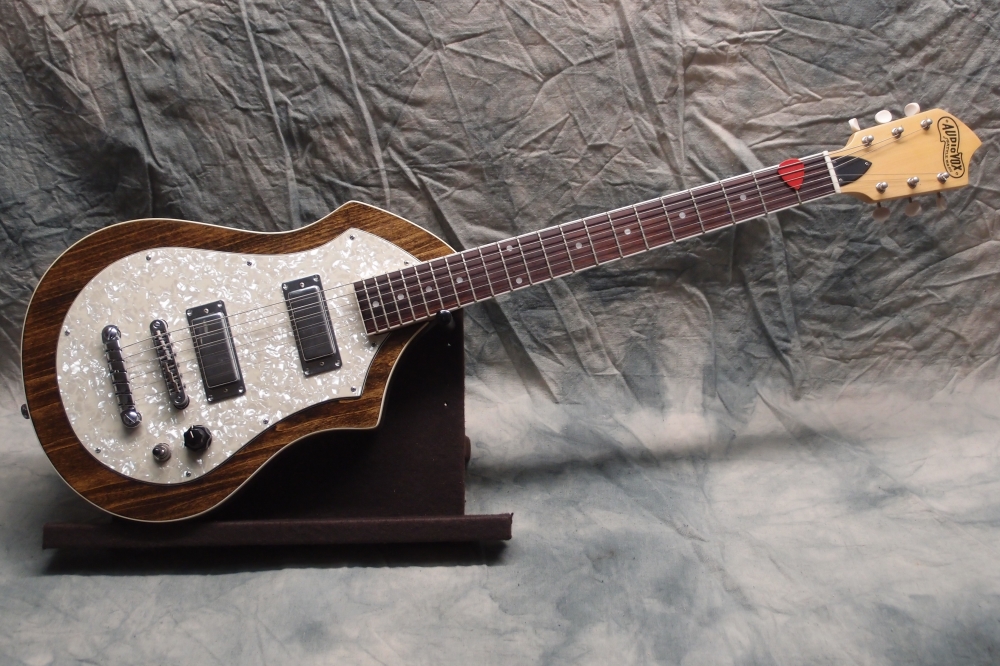

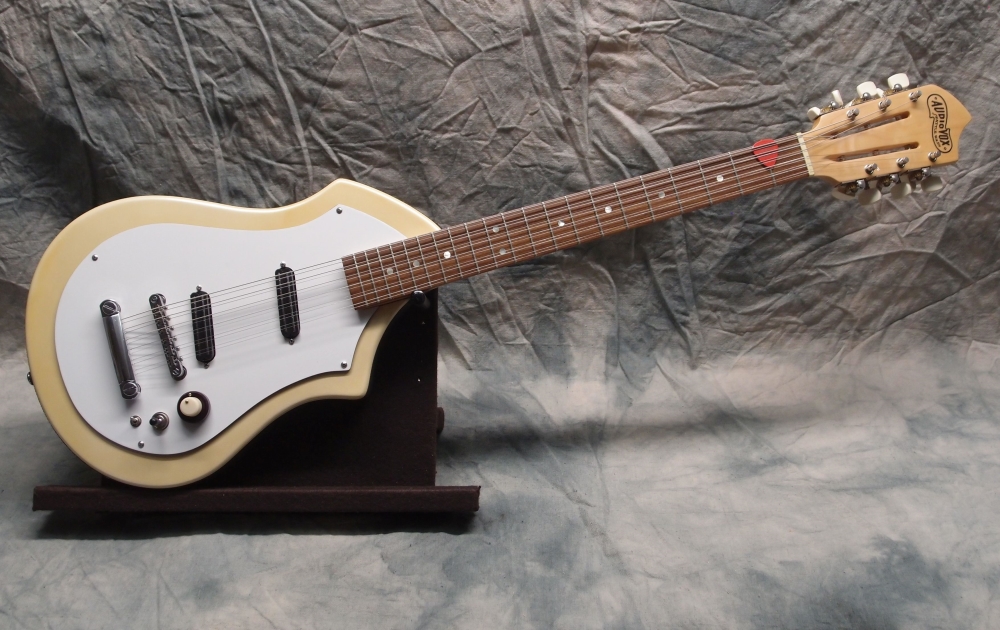


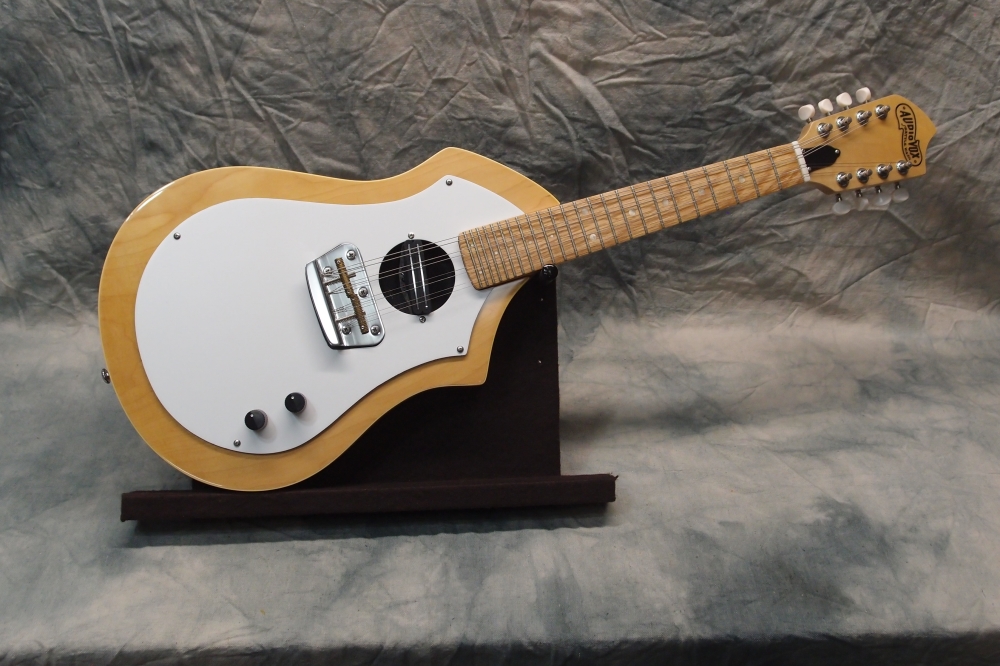

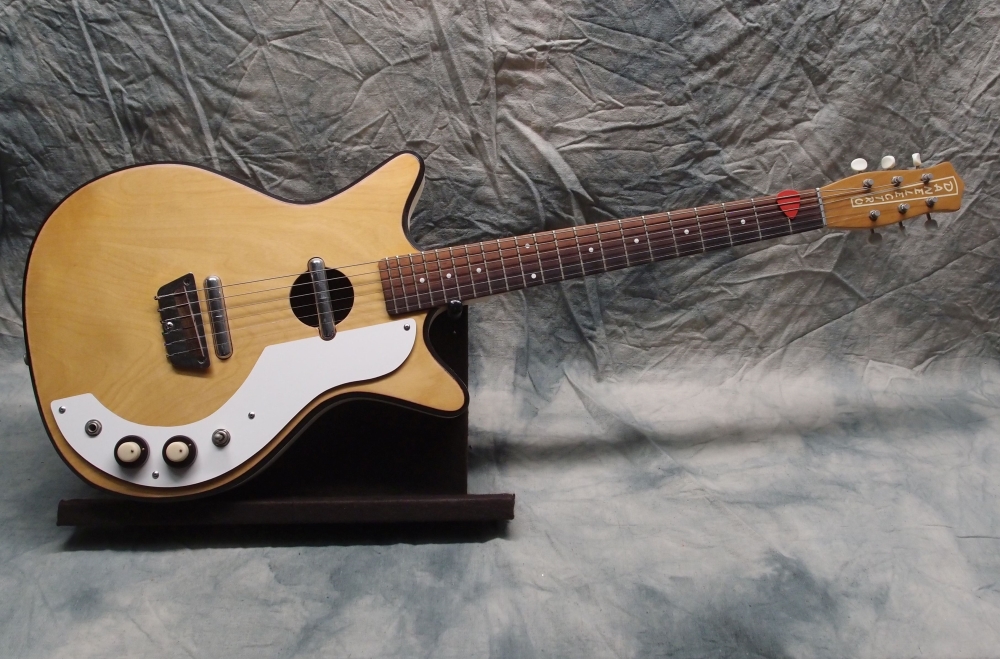





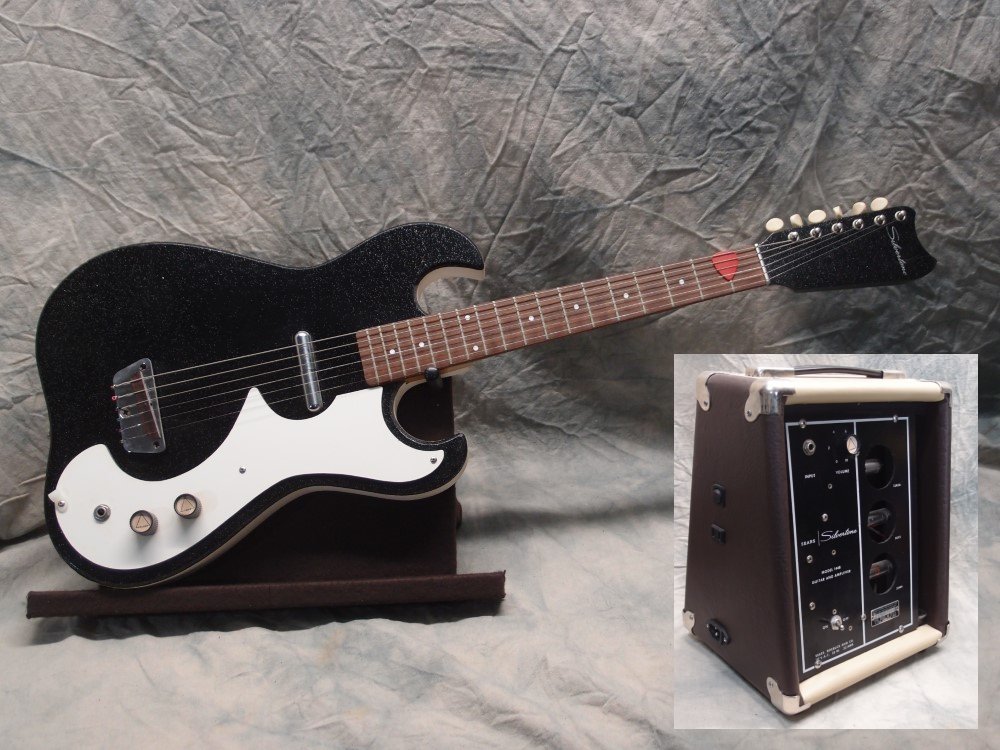

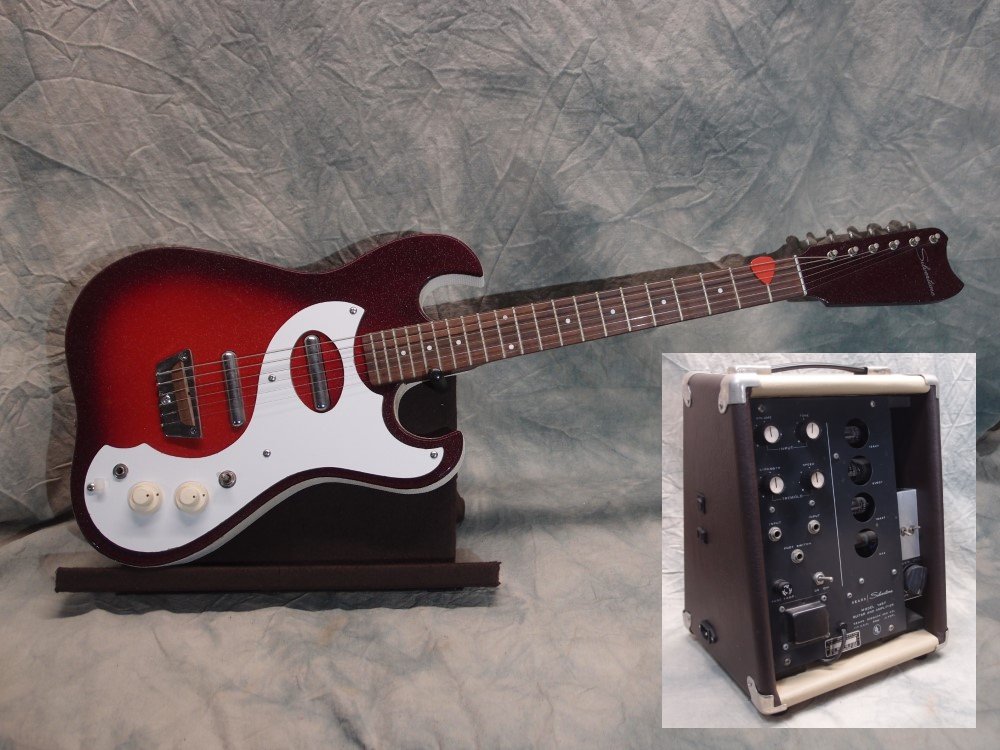

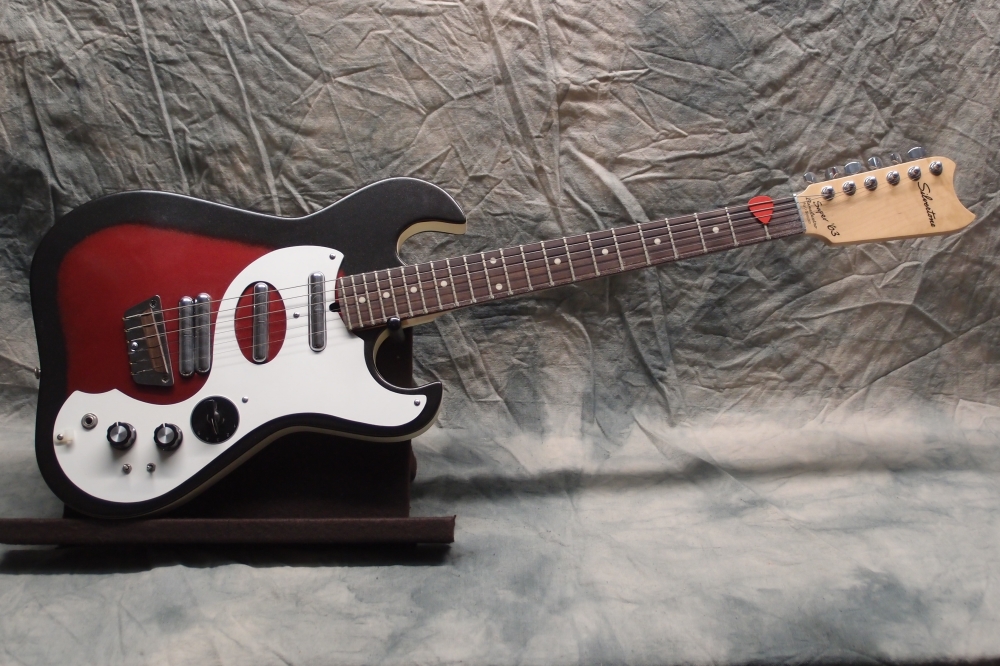
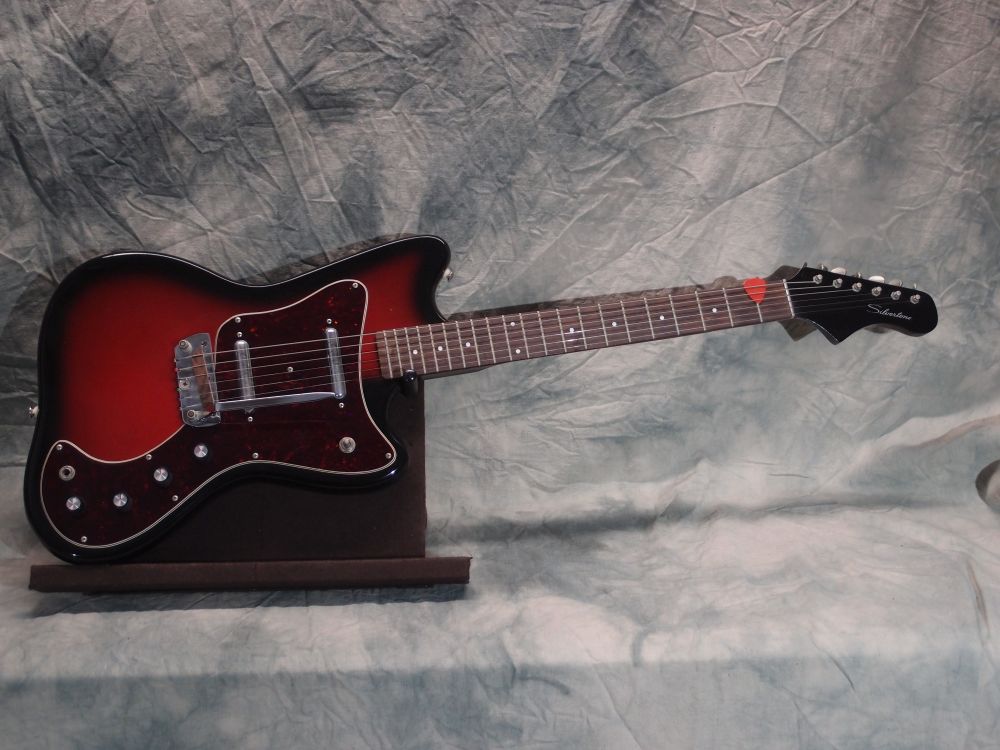







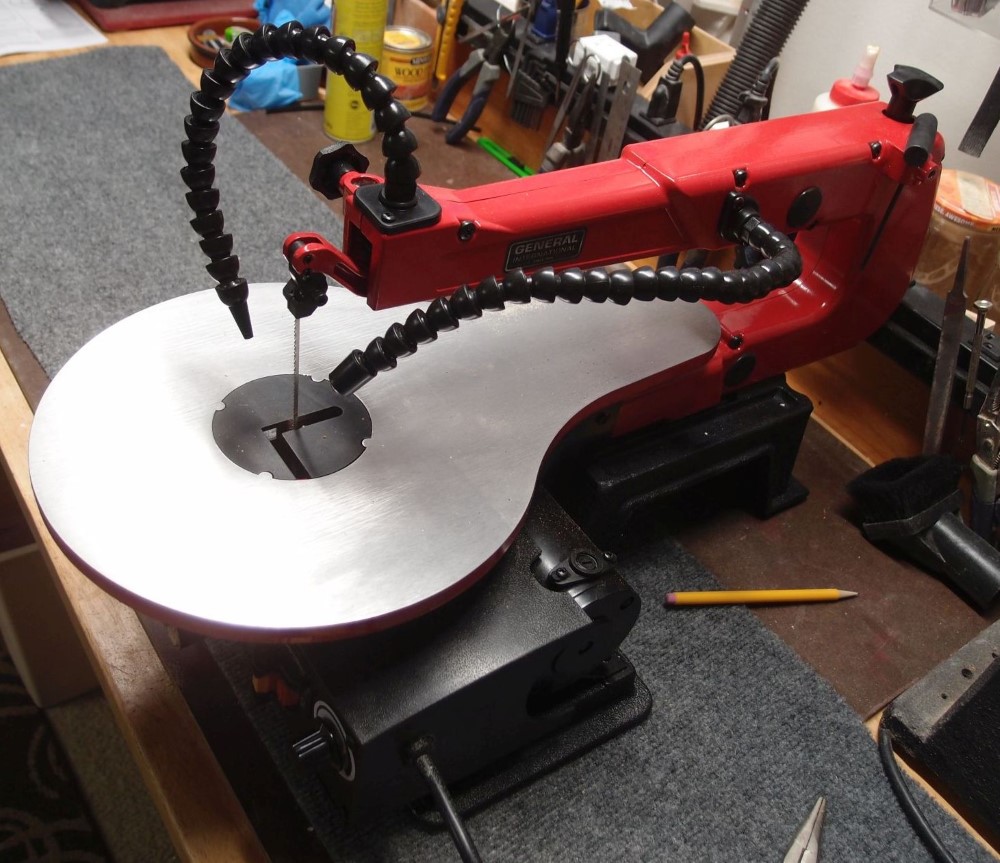
Gene Blake:
September 1, 2020 at 7:57 AM
Hi, this is a very cool bass and I’m sure it’s been sold. Are you making more or is this still available for for what $$? Thanks for keeping the Dano thing alive....I had a Dano Bass when playing in a band in !yikes! 1966. So miss it.